The Dictatorship
Progressives need to build media that competes and wins for people. Here’s how.

Amid the sea of conservative talk radio, I’ve been working as a progressive in independent media for nearly two decades hosting a popular political talk program, “The David Pakman Show.” During this time, I’ve observed a shifting media landscape that has left many politically progressive content creators — and our audiences — frustrated, confused and sometimes defeated and despondent. But I’ve also witnessed firsthand that there is a path forwardeven in this age of mass misinformationecho chambers and reactionary politics.
As misinformation and media illiteracy have plagued the already fractured American political system, much of the left would like to think this phenomenon is confined to right-wing bubbles. But progressives must grapple with the new reality: The right’s echo machine has been thriving among all online audiences and is spreading. In a study of popular online shows active in 2024the results showed that nine of the 10 most popular shows were right-leaning, accounting for at least 197 million total followers and subscribers. Of these right-leaning shows, only four are categorized as “News and Politics” on Apple Podcasts. Additionally, 72% of 111 supposedly nonpolitical shows were found to have an ideological bent to the right.
There is a path forward, even in this age of mass misinformation, echo chambers and reactionary politics.
According to Pew Research survey from August 2024, ahead of the election, about 1 in 5 Americans said they regularly get their news from social media. President Donald Trump and his allies effectively leveraged nontraditional platforms — podcasts, TikTok and influencer-driven content — to reach an audience feeling economically insecure and culturally alienated. This was especially prevalent among young male voters ages 18-29 who gravitated toward figures that emerged through gaming, fitness, financial advice and lifestyle platforms that seamlessly wove together political messages into content young men already enjoy, often offering an entry point to conservative ideology. Progressive voices, by contrast, too often relied on late-stage symbolic gestures or vague messaging that failed to resonate. In the recent election, even the too little came too late, with efforts to create a left-of-center media ecosystem equivalent to that of the right starting far too late to make an impact.
While progressive media doesn’t need to mimic right-wing tactics directly, as the most recent podcast conversation between California Gov. Gavin Newsom and right-wing activist Charlie Kirk would suggest — indeed, that would be a mistake — we can’t ignore the ecosystem entirely. What we must do is understand, engage and address why these online and independent platforms are so effective.
One of the key lessons I’ve learned is simple, yet critical: Progressive media succeeds most powerfully and meaningfully when it clearly connects politics to people’s real lives.
This is not about celebrity endorsements chasing viral moments — tactics that corporate media increasingly leans into but often end up ringing hollow. Instead, it means clearly articulating how issues like health care, climate change and economic policy tangibly affect the day-to-day lives of our respective audiences.
A driving reason audiences are drawn to independent media is authenticity — or at least the perception of it.
Right-wing media figures often project a relatable image, speaking directly to their audiences. They’re unafraid to go off script and debate anyone who shows up to the fight. Regardless of if you agree with their messaging, their methods are instructive.
The Trump campaign effectively created an environment of casual hanging out and parasocial relationships, where Trump and JD Vance themselves would appear in long-form unstructured conversations on a variety of programs, including Joe Rogan’s podcast, the Nelk Boys’ channel and Lex Fridman’s podcast.
Progressive media succeeds most powerfully and meaningfully when it clearly connects politics to people’s real lives.
The contrasting approach from Democratic candidates — with the exception of a select few like Sen. Bernie Sanders, I-Vt. — left much to be desired. Whereas Trump appeared on less overtly political shows with more of a lifestyle and pop culture bent, Democrats’ were less frequent guests in these arenas and almost always had a feeling of stiffness and micromanagement.
For progressive media, authenticity means acknowledging people’s genuine concerns about the economy, health care, misinformation and education, and providing real answers while grappling with disagreements, mistakes or unintentional policy outcomes, as opposed to spewing patronizing talking points.
My audience has gravitated toward nuanced analyses of how policy decisions — from health care to tax cuts — directly impact their finances, health or personal freedoms. When the corporate media landscape increasingly feels overwhelming, overly sensational, or gives a feeling of talking at rather than to audiences, authenticity breaks down and audiences disengage or find new sources of news.
There was a short video that went viral just prior to the election where I explained to a young Trump-supporting podcast host that, despite his confidence that China was cutting checks to the United States for tariffs placed on its products, it was actually American companies that paid the tariffs. This video ultimately accrued more than 20 million views, in part due to its simplicity, salience and authentic dialogue. Those 60 seconds from a 90-minute conversation corrected just one piece of misinformation, and did so in a way that connected directly to anyone who buys or produces goods — essentially everyone in our economy — and made them realize that Americans pay the tariffs, not China.
If we truly want progressive ideas to break through, I believe we must focus less on competing through spectacle and more on respecting and addressing the very real concerns that brought our audiences to seek us out in the first place.
In fact, despite the overwhelming noise of the mainstream media, independent progressive media has shown robust growth precisely because it offers what many mainstream outlets often don’t: substance, respect for intelligence, and a genuine dialogue. Platforms like mine that attract moderate, left and right-leaning voters demonstrate daily that audiences aren’t merely looking for confirmation of their existing beliefs; they’re hungry for clarity and honesty.
Politics isn’t consumed in isolation — it’s absorbed within the broader fabric of culture. Rather than ignoring this, progressive voices can thoughtfully engage these areas without co-opting them cynically. Viewers and listeners aren’t looking for a left-wing version of right-wing media tactics; they’re looking for content that treats them as thoughtful individuals. By offering relatable, well-reasoned perspectives that resonate on a human level, progressives can effectively reach audiences that are currently underserved or misled.
Despite widespread cynicism about the media and politics, I’m optimistic. We don’t have to accept misinformation as inevitable. Part of the solution lies in fostering critical thinking and media literacy — but another essential part is delivering media that’s meaningful, practical and directly connected to people’s daily lives. The path to a more informed, less polarized America lies in precisely this kind of engagement.
David Pakman
David Pakman is the host of “The David Pakman Show” and the author of “The Echo Machine: How Right-Wing Extremism Created a Post-Truth America.”
The Dictatorship
‘Not going away’: Conservatives pressure Speaker Johnson over Epstein
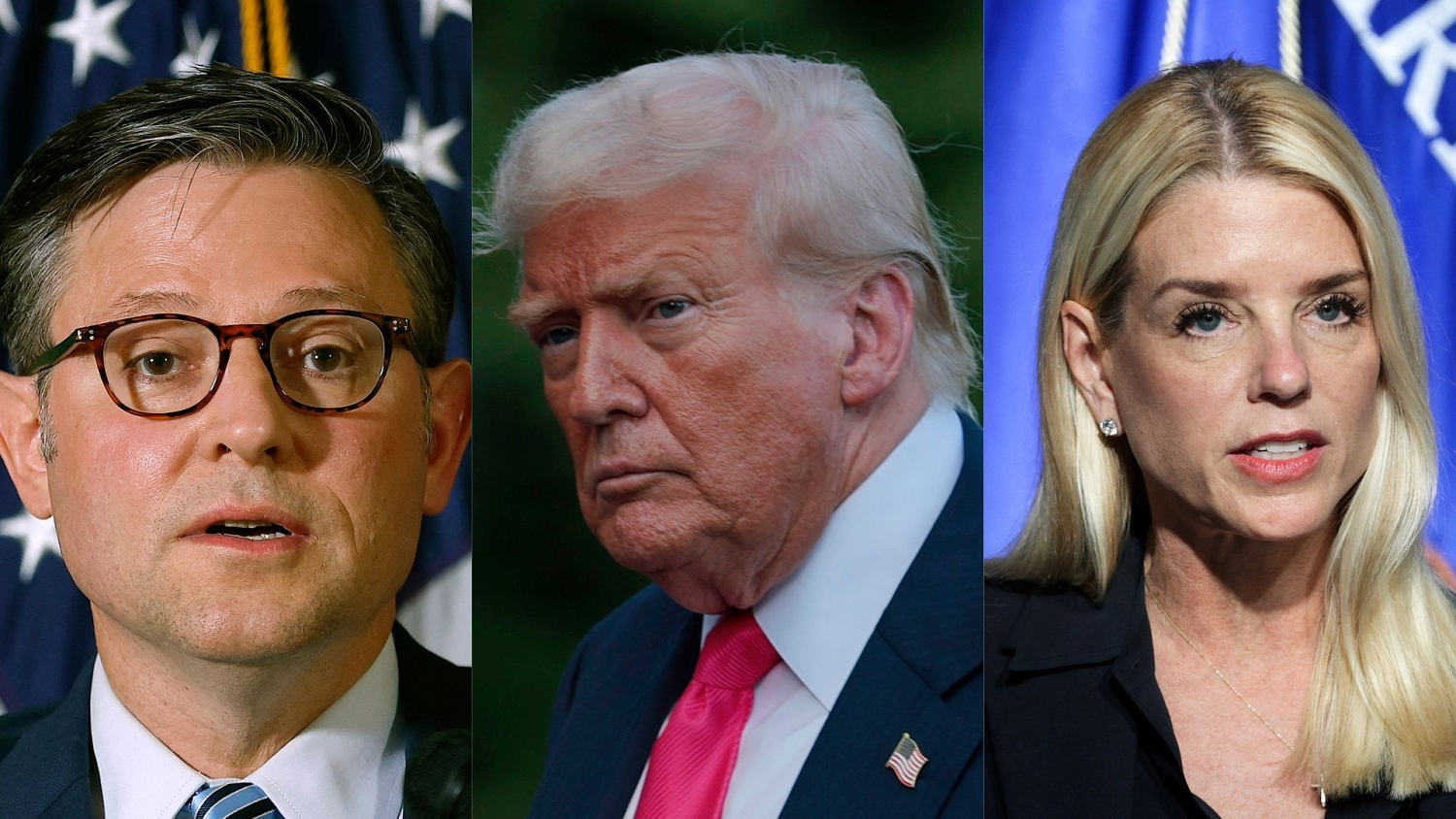

-
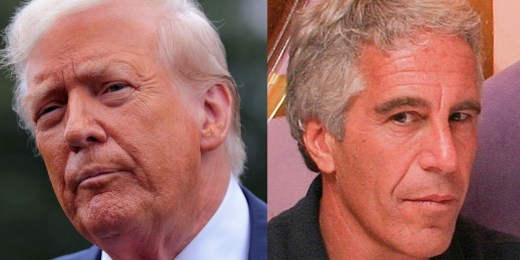
White House plagued by drum beat for more information on Epstein case
12:53
-

‘They blew it’: NY Gov. slams Republicans, says megabill will have deep impact on state
14:52
-
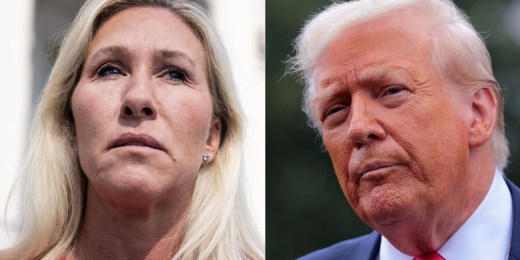
‘He’s not able to bury this story’: Trump faces revolt from MAGA base
10:11
-

Mamdani will ‘discourage’ controversial term ‘globalize the intifada’: NYT
07:06
-
Now Playing
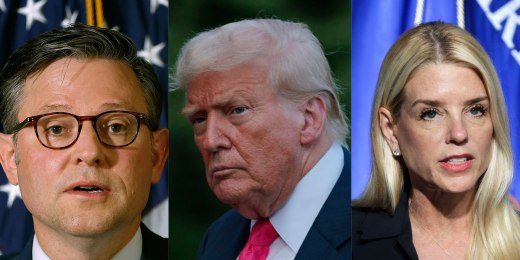
-
UP NEXT

The real reason the president suddenly sounds tougher on Russia
07:52
-

Daniel Silva’s Gabriel Allon returns in the mystery-thriller ‘An Inside Job’
08:02
-

‘Empire of the Elite’ tracks the glory years of Condé Nast
09:30
-
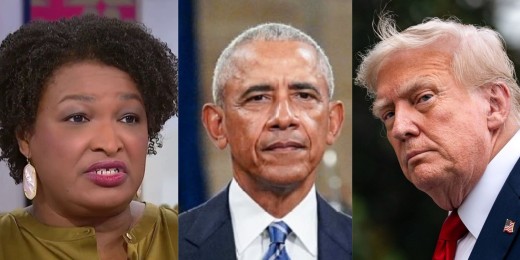
Democrats need to ‘fight’ and show that democracy can deliver: Stacey Abrams
09:43
-

Charlie Sykes: Questions about Epstein files not going away any time soon
12:47
-
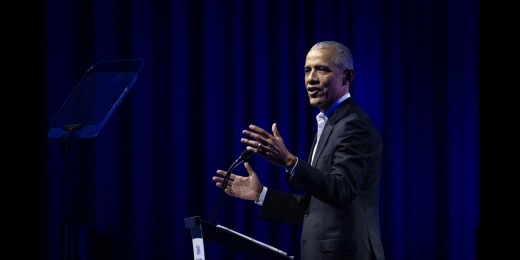
Obama’s call to action for Democrats: ‘Toughen up’ and ‘less whining’
05:39
-
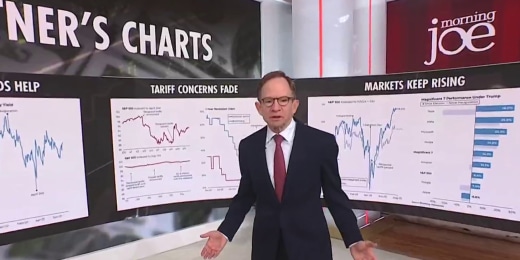
Steve Rattner: Despite Trump’s trade war, markets keep rising
07:46
-

After ‘lackluster campaign,’ Cuomo relaunches an independent bid for NYC mayor
03:43
-
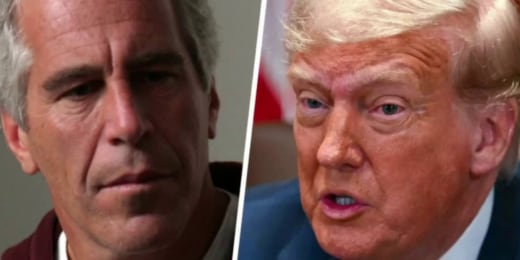
Trump not out of the woods yet with MAGA base, says conservative writer
06:55
-

Joe: Trump loyalists drop decade of rage over Epstein files. Why?
14:29
-

A look inside the alliance between the ‘Big Three’
05:55
-
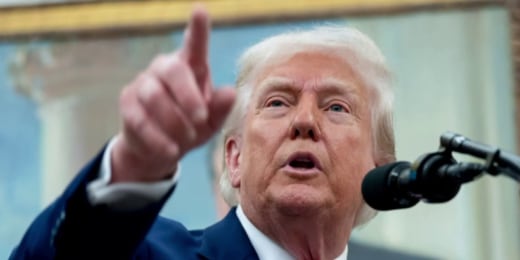
Trump was inevitable but also beatable, says host of ‘Autocracy in America’ podcast
06:55
-

‘Toxic impact’: Joe slams Secy. Noem calling judge ‘idiot’ over immigration detention ruling
05:24
-

Trump turns on Putin, announces he’ll send Patriot missiles to Ukraine
04:50
-

White House plagued by drum beat for more information on Epstein case
12:53
-

‘They blew it’: NY Gov. slams Republicans, says megabill will have deep impact on state
14:52
-

‘He’s not able to bury this story’: Trump faces revolt from MAGA base
10:11
-

Mamdani will ‘discourage’ controversial term ‘globalize the intifada’: NYT
07:06
-
Now Playing

‘Not going away’: Conservatives pressure Speaker Johnson over Epstein
10:44
-
UP NEXT

The real reason the president suddenly sounds tougher on Russia
07:52
The Dictatorship
Trump told MAGA to be quiet about Jeffrey Epstein. Fox News obeyed.

President Donald Trump’s allies at Fox News — and other major MAGA media figures — are obeying his marching orders to stop talking about Jeffrey Epsteinthe disgraced financier who was awaiting trial on charges that he sexually abused dozens of underage girls when he died by suicide in jail in 2019.
Prominent MAGA voices were in near-open rebellion last week after the Justice Department and Federal Bureau of Investigation issued in an unsigned July 6 memo stating that there was no “credible evidence found that Epstein blackmailed prominent individuals as part of his actions,” and that investigators “concluded that Jeffrey Epstein committed suicide in his cell.” Those conclusions contradicted dogmas pushed by Trumpist talking heads — including FBI Deputy Director Dan Bongino. Within days, many MAGA diehards were calling for Attorney General Pam Bondi’s resignation or firing.
By Sunday, the simmering discontent seemed primed to boil over, as Fox News anchors and prominent pro-Trump speakers at a summit organized by Charlie Kirk’s Turning Point USA warned that if Trump didn’t listen to his base, he risked losing them. But the president instead issued a statement that evening in which he stood by Bondi and demanded that his allies “not waste Time and Energy” on the Epstein saga.
By Sunday, the simmering discontent seemed primed to boil over.
Trump’s statement put to the test the MAGA pundits and influencers who had told their audiences for years that wealthy elites, corrupt officials and the mainstream press were covering up for Epstein. And most of them, particularly Fox’s anchors and hosts, promptly bent the knee.
Epstein’s name was brought up only eight times across the network’s programming on Monday, with its first reference coming well into the 6 p.m. hour. By contrast, Fox name-checked former President Joe Biden 158 times that same day.
Jesse Watters, who holds down the 8 p.m. time slot previously held by stars Bill O’Reilly and Tucker Carlson, provides a case study of the network’s compliance. The Fox host mentioned Epstein’s name across more than 100 episodes of his programs over the last six years. Watters said he was “leading the charge to expose Jeffrey Epstein’s list of fixers, clients, and famous friends,” unlike the corrupt mainstream press whose silence he claimed aided the “powerful people [who] want to keep you from knowing about Epstein’s world.”
But on Monday night, Watters obliged the demands of a powerful person with myriad, longstanding ties to the disgraced financier: Trump. The sole discussion of the Epstein story on his broadcast came during a segment in which his producer interviewed beachgoers.
Watters’ prime-time colleagues Sean Hannity and Greg Gutfeld likewise completely ignored the Epstein story on their Monday broadcasts. In the 7 p.m. slot, Laura Ingraham offered the following take: “As conservative influencers were eating their own about Epstein, the president was stealing the show on the one-year anniversary of the day he almost lost his life.”
In general, MAGA commentators have either gone silent like Fox News or are publicly championing the Trump line.
The silence from Watters and Hannity is particularly embarrassing because earlier this year both had claimed that members of the so-called “deep state” aimed to keep the Epstein documents from Bondi so she couldn’t expose them. The new narrative the president laid out on Sunday — that the likes of former President Barack Obama, former Secretary of State Hillary Clinton, and a slew of supposed deep state officials “created” the so-called Epstein files in order to undermine the MAGA movement — contradicts the hosts’ story.
Outside the Fox News portion of the MAGA ecosystem, there’s been somewhat more debate about the Justice Department memo. Some MAGA influencers pointed out the absurdity of Trump’s new narrative. “Barack Obama wrote the Epstein files? LOL. This is outright embarrassing,” commented Candace Owens on X. Benny Johnson, responding on a livestream Sunday, mentioned Trump’s theory and remarked“What?”
Others were even more critical, at times even implicating Trump himself. “Either Pam Bondi is royally screwed up … or there is something there and it’s being covered up and the president blessed it,” said Megyn Kelly, a member of the diaspora of former Fox News hosts who now compete for its audience. Daily Wire podcaster Matt Walsh said, “There just is no option that allows you to just, you know, vindicate the Trump administration entirely.”
But those cases seem like the exceptions — in general, MAGA commentators have either gone silent like Fox News or are publicly championing the Trump line.
“Is it time to move on from the Jeffrey Epstein case?” asked Souza Dinesh podcaster. “I want to argue the answer is yes.”
“I’m going to just have to defer to President Trump on this thing,” Newsmax’s Greg Kelly offered.
“I’m done talking about Epstein for the time being,” Kirk said Monday. “I’m gonna trust my friends in the administration” (though on Tuesday, Kirk claimed, “When I said ‘for the time being,’ I was talking yesterday”).
Cracks keep forming in the coalition that united around a shared hatred of the left and put Trump in office. Those fractures will almost certainly continue as his administration’s actions anger its various factions, and they may even come to threaten Trump’s cultlike hold over the MAGA movement and the largely sycophantic right-wing media. But we’re not there yet.
Matt Gertz is a senior fellow at Media Matters for America, a progressive research center that monitors the U.S. media. His work focuses on the relationship between Fox News and the Republican Party, media ethics and news coverage of politics and elections.
The Dictatorship
Trump’s deportation machine is writing its own rules

The last major overhaul of American immigration law took place decades ago and there’s been no will from Congress to revamp it since then. Instead, a string of presidents has sought to interpret the law to fit their preferred policies. What we’re seeing under President Donald Trump, though, is a federal bureaucracy abandoning the law as it exists, rewriting the rules that would constrain it from exercising maximum cruelty and dehumanization toward immigrants.
His determination marks a major shift in the way ICE functions and threatens to transform the immigration system more broadly overnight.
Over the last six months, Immigrations and Customs Enforcement has served as the tip of the spear in the Trump administration’s mass deportation push. According to The Washington Postacting ICE director Todd Lyons issued a memo last week that instructs officers to hold immigrants in their custody “for the duration of their removal proceedings” — however long that takes. He asserted that immigrants who’d previously been allowed to request bond hearings may not be released from ICE custody” with release on parole relegated to being a rarity.
Lyons’ decision is based on “a section of immigration law that says unauthorized immigrants ‘shall be detained’ after their arrest,” according to the Post, “but that has historically applied to those who recently crossed the border and not longtime residents.” A spokesperson for ICE told NBC News on Tuesday that the decision to prevent detainees from receiving bond hearings “closes a loophole” in current law, arguing that people arrested in the country’s interior should be treated the same as those apprehended at the border.
His determination marks a major shift in the way ICE functions and threatens to transform the immigration system more broadly overnight. There was already massive backlog of immigrations proceedings even before this recent escalation. According to ICE’s annual report for fiscal year 2024there are “more than 7.6 million noncitizens in removal proceedings or subject to final orders of removal on the agency’s non-detained docket.” If all of them were to have been held for the entirety of their proceedings, the number would wildly dwarf the 155,655 inmates currently held in the entire federal prison system.
Moreover, the detainees held in ICE facilities last year were only in custody for “an average of 46.9 days.” The report further noted that “detention is not punitive, and the agency detains noncitizens only when required by law or based on the unique circumstances of the case.”
Lyons’ orders entirely overturns that general guidance to instead make detention the norm rather than the exception.
This policy change will only place further strain on a system that has been tasked with widening its dragnet and ramping up its arrest numbers. NBC News reported last week that while detentions are surging under Trump, deportations are lagging: “According to ICE data, its agents arrested roughly 30,000 immigrants last month, the most since monthly data was made publicly available in November 2020. But the number of immigrants deported in June — more than 18,000 — amounted to roughly half the number of arrests, according to internal figures obtained by NBC News.”
The imbalance has led to a lack of space in ICE’s current facilities, where NBC News also recently reported that overcrowding has prompted complaints from detention centers across at least seven states of “complaining of hunger, food shortages and spoiled food.” A tsunami of funding from Congress for immigration enforcement is meant to vastly expand ICE’s available detention space. The new policy from Lyons helps ensure all those new beds will be filled — and then some.
These moves notably aren’t exclusive to ICE but taking place across the administration.
But turning over some of those beds will be easier — thanks to another new policy rewrite from Lyons. In a memo issued last weekthe acting director took advantage of a recent Supreme Court ruling to speed up the process for deporting immigrants to an “alternative” country than the one they left behind. In some cases, these people may be sent to a country where they know nobody, don’t speak the language, and have no support with less than 24 hours’ notice to challenge the order.
These moves notably aren’t exclusive to ICE but taking place across the administration. The Justice Department last month circulated a memo outlining its Civil Division’s new priorities. Rather than focusing on voting rights or violations of the Civil Rights Act, the few remaining lawyers at the storied branch must now prioritize denaturalization among other new focal points. The memo from Assistant Attorney General Brett Shumate provides 10 potential categories for the latter cases, including any referred to the division that it “determines to be sufficiently important to pursue.”
The overbroad scope of that last catch-all category is worrisome — but the one that most concerns me targets “individuals who acquired naturalization through government corruption, fraud, or material misrepresentations.” While that language sounds relatively benign, it dovetails well with right wing rhetoric that falsely claims that the Biden administration “illegally” allowed millions of immigrants into the country. Any migrant who came in during those years and gained citizenship could potentially see their naturalization threatened because of this new focus.
Disturbingly, ICE has also taken upon itself to rewrite the oversight laws that Congress has passed, limiting the window in which legislators can turn up unannounced for inspections. Members of Congress are explicitly allowed to visit facilities that “detain or otherwise house aliens” without providing notice, but they must now provide ICE with a 72-hour advancing warning before visiting an ICE field office. While the memo draws a distinction between offices and detention centers, the law doesn’t, and migrants have been reportedly held at field offices for days on end due to overcrowding.
Taken together, these revisions provide a window into how Trump’s deportation machine will operate when it is finally fully up to speed.
The steady inflow of migrants to detention centers and their speedy exfiltration to random countries is poised to escalate into a near automated process, with no oversight or chance for the banished to appeal their fate. In stripping these supposed undesirables of their rights to due processtheir freedom while awaiting a hearing, and the protections the law should provide them, the administration is robbing them of their very humanity.
How much longer then will it take for even this streamlined process, devoid of any chance of appeal or semblance of mercy to be considered too time-consuming or expensive? What then will be the fate of the people stuffed into these camps with no hope of release? The answer may be one that we swore as a civilization never to allow happen again.
Hayes Brown is a writer and editor for BLN Daily, where he helps frame the news of the day for readers. He was previously at BuzzFeed News and holds a degree in international relations from Michigan State University.
-

 The Josh Fourrier Show8 months ago
The Josh Fourrier Show8 months agoDOOMSDAY: Trump won, now what?
-
Uncategorized8 months ago
Bob Good to step down as Freedom Caucus chair this week
-

 Politics8 months ago
Politics8 months agoWhat 7 political experts will be watching at Tuesday’s debate
-

 Politics8 months ago
Politics8 months agoHow Republicans could foil Harris’ Supreme Court plans if she’s elected
-
Economy8 months ago
Fed moves to protect weakening job market with bold rate cut
-
Economy8 months ago
It’s still the economy: What TV ads tell us about each campaign’s closing message
-

 Politics8 months ago
Politics8 months agoRFK Jr.’s bid to take himself off swing state ballots may scramble mail-in voting
-
Uncategorized8 months ago
Johnson plans to bring House GOP short-term spending measure to House floor Wednesday


